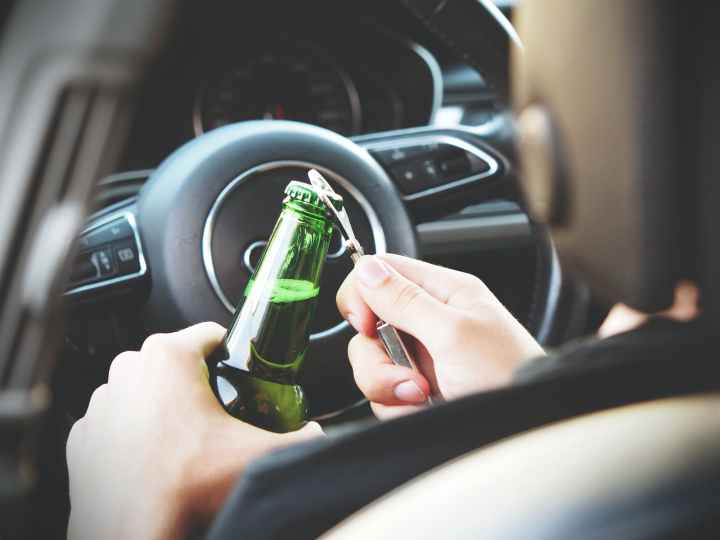
23,606.
That’s the number of people who have died in drunk driving accidents during the time that it took for me to get this article published. That’s someone’s mother, father, sister, brother, or child.
Worst of all? Those deaths were totally preventable. The technology that could’ve stopped them already exists. I know this because I built it. It’s here, and it’s ready to cut down the number of drunk driving deaths that happen every year. We just have to use it — but for reasons beyond my control, that’s not happening.
Beyond breathalyzers
For most of my life, I wasn’t particularly concerned about drunk driving — mostly because it had never affected me personally. But that changed in an instant one fateful day in 2010. A friend of mine, Tessa Conradi-Marrella, was killed by a recidivist drunk driver. She was completely sober and doing everything right. He, on the other hand, was driving recklessly with a blood alcohol concentration (BAC) three times over the legal limit. He also had a long history of driving while impaired. In other words, he was exactly the kind of person that should’ve had an ignition interlock (colloquially known as a “blow-n-go”) on his car that would have prevented him from getting on the road. Even back then, that technology was around. But why wasn’t it used?
That was the day I decided to do something about the problem.
Fast-forward a few years and a dozen prototypes, and I’ve developed a suite of products to help two specific groups of people: Those who’ve received a DUI and don’t want another one, and those who haven’t received one and want to keep it that way.
For the first group, I developed CheckBAC — a smartphone-based system that allows DUI recipients to complete their court-ordered probation with a discreet and inexpensive remote alcoho- monitoring device that costs hundreds less than other systems. It’s part of an ecosystem that allows the user to receive notifications when they need to take a blood alcohol concentration test, and then uploads the test to a management platform. No more peeing in cups or trips to the probation office to offload data. It’s faster, more affordable, and more convenient for everyone involved.
The second product is SOBRDRIVE, an app that’s essentially like having an assistant in your pocket that proactively helps you make good decisions — even after you’ve downed one too many tequila shots on Taco Tuesday.
Here’s how it works: You know you’re going out and getting tipsy tonight, so you take out your phone and fire up the SOBRDRIVE app. You then choose a BAC level between .01 and .05 (because anything above that, and you’re probably already making bad decisions that you’ll regret in the morning). Once you’ve chosen a BAC level, the app will lock your vehicle, and you will have to blow a BAC lower than what you’ve set on the app. If you happen to blow above that level, the app will automatically send a text message to a preselected designated driver(s), who will have your GPS location, BAC level, and video. It will also give you options for Uber/Lyft, and you will be able to test again every 15 minutes until you’re below the BAC limit. It’s basically a way to proactively prevent a DUI.
The remaining roadblocks
Building these tools was the easy part. Getting them out into the world presents a far greater challenge. Despite the fact that affordable, accessible ignition interlock technology has the potential to save lives, it’s being held back by the forces of politics, bureaucracy, and pay-to-play capitalism.
Case in point? There are two bills in Congress right now that are aimed specifically at stopping drunk driving: The RIDE ACT of 2019 and the newly introduced HALT Act. They are sponsored by Sens. Rick Scott (R-Florida), Tom Udall (D-Utah), Debbie Dingell (D-Michigan), David McKinley (R-West Virginia), and Kathleen Rice (D-New York). The only problem? These bills are woefully behind the curve. They would provide more than $50 million for “research” into the efficacy and effectiveness of ignition interlock technology, rather than using that funding to actually install the technology in cars.
The price of putting SOBRDRIVE in a vehicle is $125. That’s 400,000 vehicles that could have been equipped for testing in the U.S. last year. I’ve been banging on Scott and Udall’s doors for two years, but to no avail. There is no good explanation as to why not one of those politicians will take a phone or Zoom meeting with our team. I also tried to get Mothers Against Drunk Driving (MADD) to help me out and get the government’s attention — but without a hefty donation, even the world’s foremost anti-drunk driving organization won’t give me the time of day. Apparently lifesaving technology isn’t enough to grab their attention.
This is not a battle that is going to be solved overnight, but if we can save another Tessa Conradi from being killed by a drunk driver who should have never been allowed to drive without an ignition interlock for the rest of his life, then we will be making a huge impact.
It may not save everyone, but it could save your someone!



